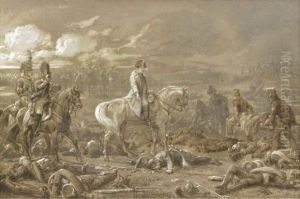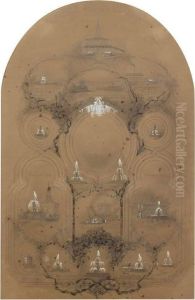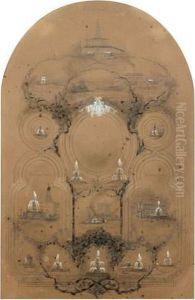Iosif Adolfovich Charlemagne Paintings
Iosif Adolfovich Charlemagne, born in 1824 in St. Petersburg, Russia, was a distinguished Russian architect and graphic artist, renowned for his significant contributions to the architectural landscape and graphic arts of the Russian Empire during the 19th century. Coming from a family with French Huguenot roots that had settled in Russia, Charlemagne was deeply embedded in the cultural and artistic milieu of his time, which greatly influenced his career and artistic output. He was part of a lineage of architects, as his father, Adolphe Charlemagne, was also a respected architect, ensuring that Iosif grew up in an environment that nurtured his talents from an early age.
Educated at the Imperial Academy of Arts in St. Petersburg, Charlemagne excelled in his studies, showcasing a profound talent for both architecture and graphic design. His education laid a solid foundation for his career, during which he contributed to the design and construction of several notable buildings in St. Petersburg and other parts of Russia. His architectural style was characterized by an eclectic mix, incorporating elements of Classicism, Gothic revival, and later, Byzantine revival, reflecting the diverse architectural trends of the era.
Apart from his architectural ventures, Charlemagne was also a prolific graphic artist. He produced a wide array of works, ranging from detailed architectural drawings to illustrations for books and periodicals. His graphic art is noted for its precision and attention to detail, qualities that made him highly sought after for illustration work. Charlemagne's illustrations often depicted historical and cultural themes, which played a significant role in the visual culture of his time, contributing to the popularization of historical and patriotic narratives.
Iosif Adolfovich Charlemagne's contributions to Russian architecture and graphic arts were recognized during his lifetime, and he was awarded several honors for his work. He left behind a legacy that not only includes the buildings he designed and the art he created but also his influence on the generations of architects and artists who followed. Charlemagne passed away in 1896, but his work continues to be celebrated for its artistic merit and its role in the cultural and historical landscape of Russia.


